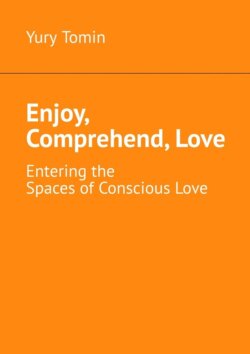Читать книгу Enjoy, Comprehend, Love. Entering the Spaces of Conscious Love - Yury Tomin - Страница 14
PSYCHOLOGY OF LOVE
Three-Component Love Theory
ОглавлениеThe triangular theory of love, proposed in 1986 by Robert J. Sternberg, is one of the most authoritative and popular. It takes into account and to some extent generalizes a wide range of different approaches: a rather one-sided experience of describing love within the clinical concept of D-love (deficiency love – love as the satisfaction of an internal need), its alternative concept B-love (being love – the love of a mature personality based on understanding and acceptance of oneself and a partner) Abraham Maslow, the theory of six styles of love by John Alan Lee, the results of studies of love as different types of attachment, comparative characteristics of love and friendship, implicit theories of love, etc.
According to Sternberg, love can be imagined as a mental structure arising from three components. Metaphorically, it is close to the image of a triangle figure, where these components, independently located in their corners, interact in the area of intersection of the sectors of their rays-energies. The first component of love is intimacy (feelings of closeness). Recall that intimacy includes such emotional experiences as closeness, connectedness, bondedness, in other words, the feeling of a common inner space filled with warmth. It embodies trust, care, honesty, support, understanding, openness. Intimacy is achieved through opening yourself up to your partner.
The second component of love – passion – contains various energies of attraction, excitement, and striving in a wide range: from romantic dreams to erotic fantasies and sexual manifestations. It personifies such motivational elements as physical attractiveness, admiration (excitement), sexual interest, arousal, a strong desire (longing) for a partner.
Sternberg uses two terms decision and commitment to refer to the third component of love. The third component includes two concerted actions of love: the choice of this particular person as a beloved from now and forever and the associated inner determination about its irreversibility, no matter how difficult the external circumstances of love may be. This component of love embodies a cognitive decision to link your fate with your partner and remain faithful to him. In this case, however, the possibility of separation of one aspect of this component of love from another is also allowed. If we interpret these cognitive-volitional actions from the standpoint of the feelings accompanying them, then we can talk about a sense of duty, which is based on the noble qualities of a person.
The three components of love, according to Sternberg, are separate, rather independent centers of it that interact with each other. So, for example, greater intimacy causes a greater intensity of passion and responsibility in the relationship of partners.
Various combinations of these components of love make it possible to classify love into seven types. In the case of only one component, we have either sympathy, or blind passionate love, or formal (empty) love. The presence of the two ingredients creates romantic, companionate, or fatuous love. Perfect (consummate or complete), in other words, high love is characterized by the presence of all three components.
Such a model of love clearly enough reflects how balanced love is and allows you to measure the amount (intensity) of really flowing love. For this, Sternberg developed questionnaires to assess the degree of each of the three components of love: intimacy, passion and devotion. If you want to measure the temperature of your love, then try to honestly answer the questions given in the Practices of Love appendix.
Using this concept, a number of questions can be explored, the answers to which explain certain problems arising in a love relationship. For example, how do real and ideal love triangles coincide? What are the combinations of the components of love that each partner brings to love? Who would be the perfect match for someone with the ability to experience love based on a specific set of ingredients? In some crisis situations, it is also useful to compare the patterns of love that we feel, and which are manifested in real actions towards our partner.
Having defined what perfect love is, Sternberg immediately notes that it is much easier to achieve it than to keep it. If so, then surprisingly the instability of perfect love is similar to the fleetingness of the period of falling in love, in other words, high love is somewhat akin to little love. Therefore, it is possible that to hold mature love means periodically to plunge into the magical source of being in love.
It should also be noted that a person’s ability to consciously control and regulate drives and motivational processes (a component of passion) is considered practically unrealizable, in contrast to the feelings associated with intimacy and duty towards a partner. The great William Shakespeare seems to have written about this:
My love is as a fever longing still,
For that which longer nurseth the disease,
Feeding on that which doth preserve the ill,
Th’ uncertain sickly appetite to please:
My reason the physician to my love,
Angry that his prescriptions are not kept
Hath left me, and I desperate now approve,
Desire is death, which physic did except.
Past cure I am, now reason is past care,
And frantic-mad with evermore unrest,
My thoughts and my discourse as mad men’s are,
At random from the truth vainly expressed.
For I have sworn thee fair, and thought thee bright,
Who art as black as hell, as dark as night.
Sternberg’s three-component theory of love is perhaps the main achievement of psychology in the dissection of love. However, in order to connect it with the multifaceted practice of relations between a man and a woman, Sternberg had to supplement it with the concept of love as a story.
R. Sternberg’s triangular theory of love
Components of the feeling of love: Intimacy, Passion, Duty. Degree of feelings: Warm, Hot, Cold. Mental processes: Emotional, Motivational, Cognitive.
